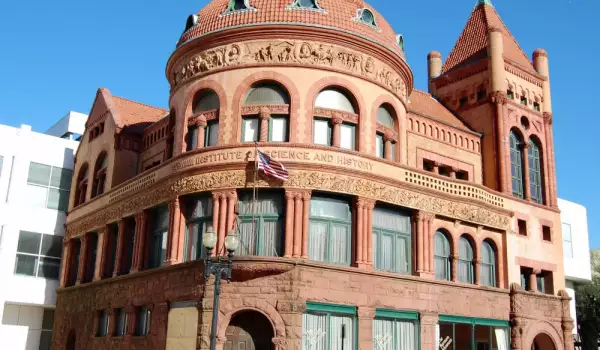Bridgeport

Bridgeport is a city located within the state of Connecticut. Bridgeport is located within the county of Fairfield. The population is about 144 000 people.
The city is characterized by its attachment to the famous local resident, circus artist and mayor - PT Barnum. Barnum built three houses in the city and during the winter hosted the city circus.
The first English settlement on the west bank of the estuary Pequonnock was founded in 1639 and was named after the river. In 1777, the village was renamed Newfield. During the American Revolution, Bridgeport became an important strategic center.
In 1800 Newfield became a suburb of Bridgeport and in 1836 Bridgeport was officially recognized as a town. Bridgeport is known as the birthplace of Frisbees, because here was an open office of one of the first companies to produce a Frisbee.
During the first years of its existence Bridgeport was inhabited by people who were subsisting on fishing, raising cattle, and agriculture. In the late nineteenth century it passed through a stage of dramatic industrialization and became a manufacturing center. The region produced cutters, sewing machines, carriages, brassieres, saddles, and ammunition.
In March 1860, Abraham Lincoln made a speech in the auditorium in the old Bridgeport City Hall. A special plaque notes the place where he made this speech.
With the start of World War I, work in the city increased, but there were many strikes as workers demanded an eight-hour workday. Strikes were so successful that it spread throughout the Northeast.
In the thirties of the twentieth century, Bridgeport was a powerful industrial center with more than five hundred factories. In the late nineteenth century, in the city arrived many immigrants from Eastern Europe, Italy and Ireland.
After the mid-twentieth century, the s restructuring of heavy industry causes the loss of thousands of jobs.
In 1978, Bridgeport teachers declared a strike and went on for nineteen days to overcome the unsatisfying binding requirements of their contracts. Two hundred seventy-four teachers were sent to prison after the strike.
Bridgeport was trying to revive after the devastating economic effects of World War II, but the attempts were in vain. In 1991, the city required protection from bankruptcy.
In the early twenty-first century, Bridgeport recovered, despite many years of high crime, poverty and corruption.
The city is infused a fresh investment of one billion dollars. The Municipal Council approves the new urban plan and begun reconstruction in selected areas.







